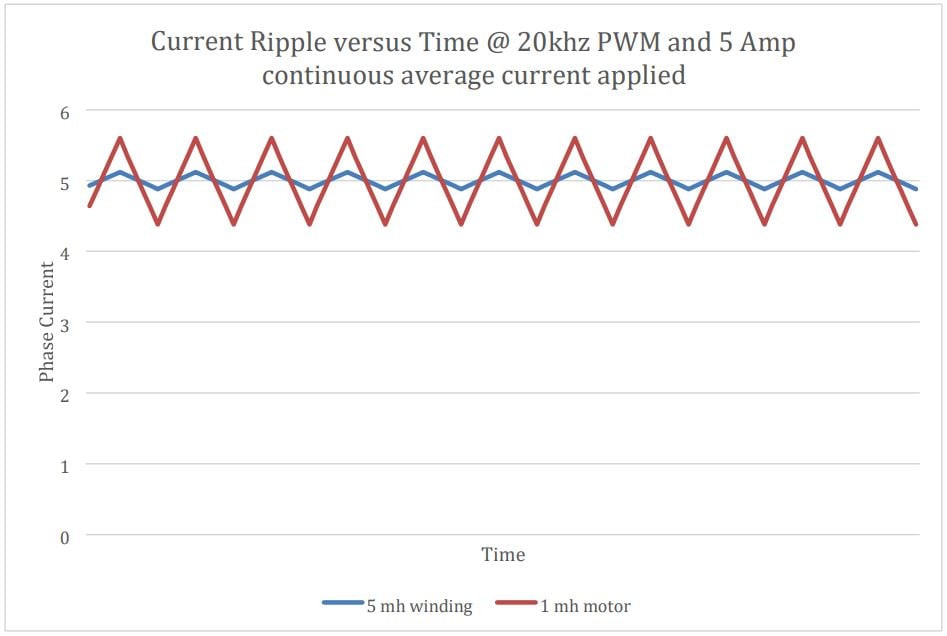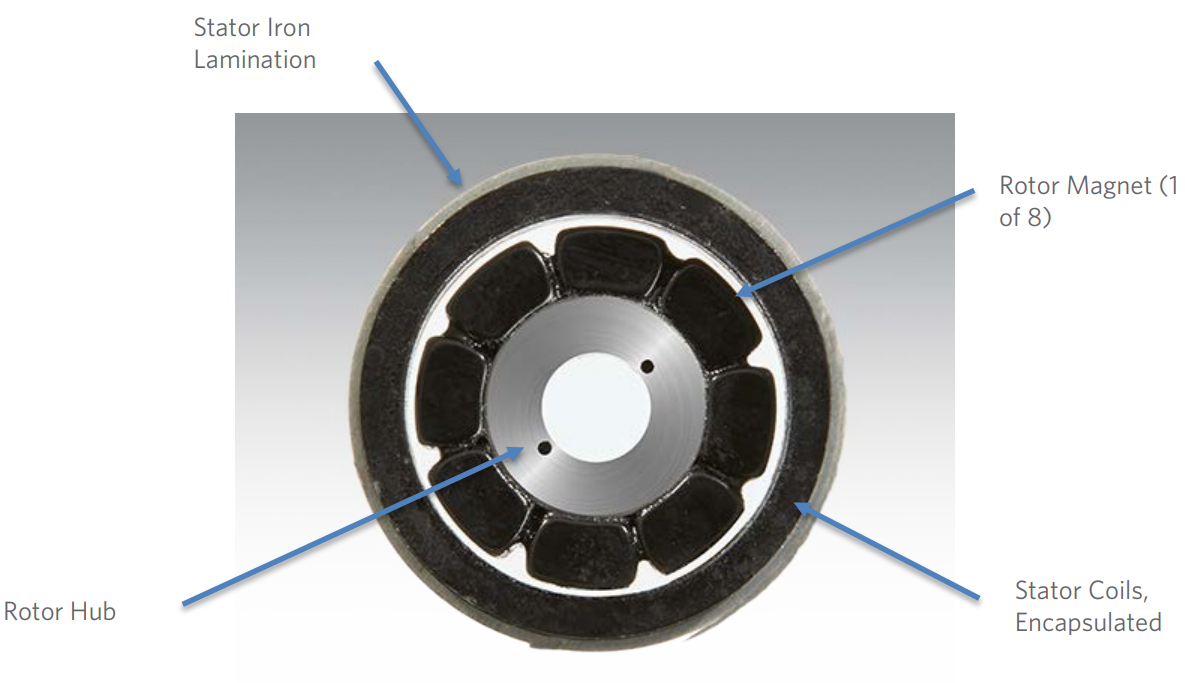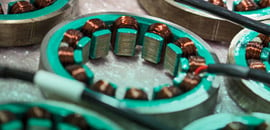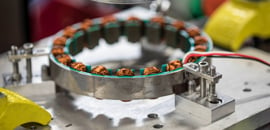Example:
Key motor specifications
Ke = 14.8 volts/krpm
Kt = .14 NM/amp
R = 13.6 ohm
L = 0.6 mh
Ir = 1.0 amp (rated continuous current)
24 volts/.000600 Henry = 40,000 amps/sec current rise
At a PWM frequency of 20 kHz, the current ripple could be as high as +/-1.0 amp. At a PWM frequency of 100 kHz, the current ripple is reduced to +/-0.2 amps. A good goal for current ripple is 10% of the rated current for the motor.
While the torque output versus angle is very sinusoidal and the motion is very smooth with slotless motors, such low inductance will result in a large amount of current ripple relative to the rated continuous current of the motor. This means you have an average of 1 amp with +/- 1 amp of ripple under worse case conditions. At 24 volt bus this motor needs 100 kHz PWM frequency to get close to 10% current ripple.
Low Voltage and High Speed Motors
All permanent magnet brushless motors generate voltage proportional to speed. The maximum speed a given motor will run is directly related to the bus voltage and the voltage constant, Ke. Therefore, low voltage applications will only work with low Ke values. Lowering Ke is done by reducing the phase turn count, which as previously described reduces inductance by the square of the difference.
The following example demonstrates this phenomenon.
Initial Motor Configuration:
Ke = 10 volts/krpm
Kt = .1 NM/amp
R = 1 ohm
L = 1 mh
With a 24 volt supply, maximum speed for this system is 2400 rpm.
New Motor Configuration:
A new project requires a speed of 5000 rpm on 24 volts. Within the same motor frame, the winding can be scaled to lower the voltage constant by adjusting coil turns. The adjusted motor would have the following parameters.
Ke = 4.8 volts/krpm
Kt = .045 NM/amp
R = .23 ohm
L = .23 mh
The maximum speed of this motor is now 5000 rpm. The resistance and inductance scale by a square function due to the properties of the motor phase magnet wire. The volume of motor and the volume of copper are the same. Kt and Ke both scale directly with the number of turns.
Example:
24 volts/.000230 Henry = 104,000 amps/sec current rise.
At a PWM frequency of 20 kHz, the current ripple could be as high as +/- 2.6 amps. At a PWM frequency of 100 kHz, the current ripple is reduced to +/- 0.5 amps. As previously stated, good goal for current ripple is 10% of the rated current for the motor.
Conclusion
As motor design become smaller, smoother and more efficient and responsive, low inductance can creep up as a new challenge for motion control system designers. Inductance can be very low with slotless motor technologies or in low voltage applications that require high speed.
The solution to the problem is to match the PWM frequency of the motor controller to the motor in order to minimize current ripple. Other options include adding serial inductance to the motor phases or using a linear motor controller instead of a PWM controller.
There are many benefits to low inductance, including faster motor response through lower time constants, smoother torque, lower velocity ripple and higher speed when operating from low voltage power sources.








